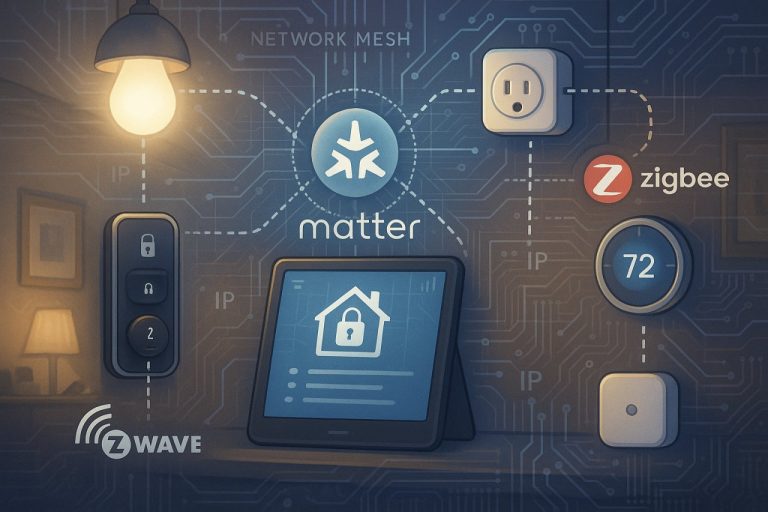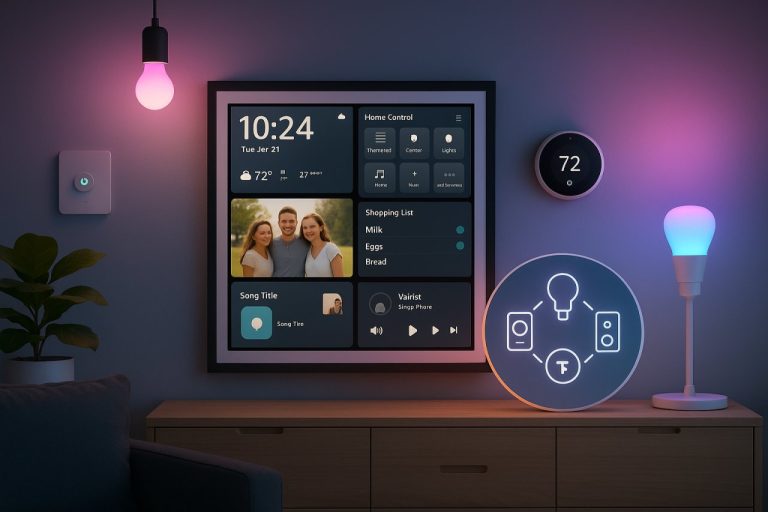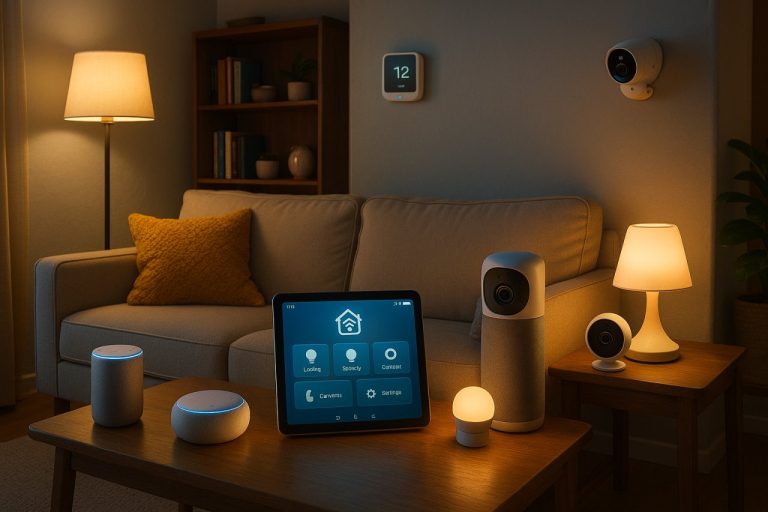
Voice Assistant Face-Off 2025: Alexa vs Google vs Siri Tested
- Introduction: Setting the Stage for the 2025 Voice Assistant Landscape
- Introduction: Setting the Stage for the 2025 Voice Assistant Landscape
- The Expanding Role of Voice Assistants in Smart Homes and Daily Life
- Why a 2025 Comparison of Alexa, Google Assistant, and Siri?
- Evaluation Framework: Balancing Technical Specs, Real-World Use, and Ecosystem Integration
- Technical Specifications and Hardware Ecosystem Integration
- Technical Specifications and Hardware Ecosystem Integration
- Flagship Smart Speaker Hardware: Processing, Audio, and Microphones
- Smart Home Ecosystem and Protocol Support
- AI Models and Voice Recognition Technology
- Summary
- Performance Metrics: Responsiveness, Accuracy, and Intelligence
- Performance Metrics: Responsiveness, Accuracy, and Intelligence
- Responsiveness: Alexa+ Latency Challenges vs. Google’s Speed Advantage
- Voice Recognition Accuracy: Performance Across Noise Environments
- Intelligence and Information Retrieval: Generative AI and Ecosystem Synergy
- Summary of Testing Methodology and Quantitative Data
- Final Takeaways
- User Experience and Practical Day-to-Day Usage
- User Experience and Practical Day-to-Day Usage
- Ease of Setup and App Usability
- Voice Interaction Naturalness and Conversational Context
- Smart Home Control and Automation
- Privacy and Security Features
- Multimedia Handling and Accessibility
- Summary
- Comparative Analysis: Alexa vs Google Assistant vs Siri in Real-World Scenarios
- Comparative Analysis: Alexa vs Google Assistant vs Siri in Real-World Scenarios
- Smart Home Hub Control
- Information Queries
- Entertainment
- Productivity
- Emergency Services
- Summary of Limitations and Innovations
- Final Verdict
- Strengths, Limitations, and Technical Trade-Offs
- Strengths, Limitations, and Technical Trade-Offs
- Alexa: Leading in Device Compatibility and Home Automation, but App and Conversational UX Need Refinement
- Google Assistant: Data-Driven Intelligence Excelling in Information Retrieval but Facing Smart Home Control Constraints
- Siri: Privacy-First Apple Ecosystem Integration with Conversational and AI Advancement Delays
- Technical Trade-Offs and Development Trajectories
- Final Verdict and Recommendations Based on Use Case and Ecosystem
- Final Verdict and Recommendations Based on Use Case and Ecosystem
- Who Wins for Specific User Profiles?
- Optimal Hardware Pairings by Budget and Need
- Ecosystem Lock-In and Personal Priorities: Practical Considerations
- Looking Ahead: Voice Assistants in 2025 and Beyond
- Summary: Matching Voice Assistants to Real-World Needs

Introduction: Setting the Stage for the 2025 Voice Assistant Landscape
Introduction: Setting the Stage for the 2025 Voice Assistant Landscape
Voice assistants have become indispensable tools in everyday life, a trend that continues to accelerate into 2025. Current projections estimate that 75% of households will own at least one smart speaker device this year, with 65% of adults aged 25 to 49 engaging with voice-enabled devices daily. This widespread adoption goes beyond mere convenience—voice shopping alone is responsible for over $3.3 billion in consumer spending, underscoring that these assistants are evolving into essential components of commerce and daily routines.
The Expanding Role of Voice Assistants in Smart Homes and Daily Life
Today’s voice assistants serve far more than hands-free queries; they act as central hubs within smart homes globally. The smart speaker market is expected to exceed 400 million units by 2025, with AI-driven assistants tightly integrated into home automation, security, and entertainment systems.
For instance, hubs such as Aqara’s M3 and M100 provide local automation capabilities, reducing dependency on cloud services while enhancing privacy and responsiveness. Beyond residential use, voice assistants are increasingly adopted in enterprise sectors—including healthcare, banking, and retail—where they streamline workflows and significantly reduce client service costs.
The technology has matured to include AI that anticipates user needs, effortlessly managing complex schedules, controlling diverse smart devices, and delivering context-aware information on demand.
Why a 2025 Comparison of Alexa, Google Assistant, and Siri?
Among many contenders, Amazon Alexa, Google Assistant, and Apple Siri dominate the voice assistant landscape in 2025. Each platform has undergone substantial advancements:
-
Amazon Alexa introduces “Alexa+,” a generative AI-powered assistant designed to learn user context and allow natural interactions without rigid command structures. Amazon’s $4 billion investment in AI partnerships positions Alexa at the forefront of AI agent innovation, complemented by subscription tiers that unlock enhanced features.
-
Google Assistant leverages the Gemini AI model to facilitate natural, multimodal conversations. Its integration with Google’s extensive data ecosystem ensures timely, accurate responses. Google has streamlined its feature set by pruning less-used functions to improve user experience, maintaining its appeal for users deeply embedded in the Google ecosystem.
-
Apple Siri is evolving into “Siri 2.0,” emphasizing deeper personal context, on-device AI processing, and expanded in-app actions powered by Apple Intelligence. Privacy remains a cornerstone, with the majority of AI processing happening locally on Apple devices.
These assistants embody distinct philosophies and technological approaches: Alexa excels in comprehensive smart home automation, Google Assistant leads in information retrieval and ecosystem integration, while Siri prioritizes privacy and seamless operation within the Apple ecosystem.
Evaluation Framework: Balancing Technical Specs, Real-World Use, and Ecosystem Integration
Our comparison balances both technical capabilities and practical user experience, structured around these key criteria:
-
Technical Performance: Includes response accuracy, natural language understanding, latency, and AI sophistication. Voice assistants now achieve over 99% speech recognition accuracy, critical for smooth interactions.
-
Real-World Use Cases: Examines everyday functionality such as schedule management, smart device control, handling complex multi-step commands, and delivering contextually relevant responses.
-
Ecosystem Integration: Evaluates compatibility with smart home protocols like Matter, Zigbee, and Thread, third-party app support, and cross-device continuity. Alexa emphasizes broad integration across Echo devices; Google Assistant leverages native Google apps and services; Siri benefits from deep Apple ecosystem cohesion.
-
User Experience and Privacy: Considers ease of setup, customization options, conversational naturalness, and data handling practices. Apple’s on-device AI contrasts with Google’s cloud-centric model, influencing privacy and latency.
This framework is designed to cut through marketing noise and provide an evidence-based, practical analysis tailored for tech-savvy consumers and smart home enthusiasts. The objective is to clarify which assistant best aligns with diverse user needs and smart home configurations in 2025.
With this foundation, the detailed analysis that follows will explore how Alexa, Google Assistant, and Siri perform across these dimensions—highlighting their strengths, limitations, and real-world impact as of 2025.
| Criteria | Amazon Alexa | Google Assistant | Apple Siri |
|---|---|---|---|
| AI Technology | Alexa+ (Generative AI-powered, context learning) | Gemini AI model (Natural, multimodal conversations) | Siri 2.0 (On-device AI, deeper personal context) |
| Investment | $4 billion in AI partnerships | Integration with Google data ecosystem | Focus on privacy and local processing |
| Smart Home Integration | Comprehensive smart home automation, Echo devices | Native Google apps and services | Deep Apple ecosystem cohesion |
| Privacy Approach | Cloud-based with subscription tiers | Cloud-centric model | Majority AI processing on device |
| Key Strengths | Broad smart home compatibility, natural interaction | Accurate info retrieval, streamlined features | Privacy-focused, seamless Apple integration |
| Target Users | Smart home enthusiasts seeking automation | Users embedded in Google ecosystem | Apple users valuing privacy and integration |
| Evaluation Framework Components | Technical Performance, Real-World Use, Ecosystem Integration, User Experience and Privacy | ||
| Speech Recognition Accuracy | Over 99% | ||
| Smart Speaker Market Projection (2025) | Over 400 million units globally | ||
Technical Specifications and Hardware Ecosystem Integration
Technical Specifications and Hardware Ecosystem Integration
In 2025, Alexa, Google Assistant, and Siri each showcase distinct hardware platforms and ecosystem integrations that reflect their strategic priorities—balancing processing power, audio fidelity, and smart home interoperability. This section examines the flagship smart speakers’ core specifications, supported connectivity standards, device compatibility, and the AI models driving voice recognition and natural language processing.
Flagship Smart Speaker Hardware: Processing, Audio, and Microphones
Amazon Echo 4th Gen stands out with its AZ1 Neural Edge Processor, a dedicated chip that halves Alexa’s response latency by running lightweight AI models locally. This hybrid edge-cloud approach reduces dependence on cloud computation, enabling faster and more natural voice interactions. Audio hardware features a 3-inch upward-firing bass driver paired with dual 0.8-inch tweeters angled to create a wide soundstage, delivering richer sound than previous Echo generations. The device incorporates a multi-microphone array optimized for far-field voice detection, ensuring reliable wake-word recognition even in noisy environments. Connectivity-wise, the Echo natively supports Zigbee, allowing it to serve as a smart home hub without external bridges—an advantage for users invested in Zigbee-compatible devices.
Google Nest Audio takes a different route, relying on general-purpose processors optimized for audio fidelity and voice recognition, with cloud AI support via Google’s extensive infrastructure. Its speaker system is tuned to be 75% louder than the original Google Home, with 50% more bass, catering to users prioritizing sound quality. The microphone array is robust, designed to capture voice commands accurately in challenging acoustic conditions. Importantly, Nest Audio supports both Thread and Matter protocols, reflecting Google’s commitment to emerging smart home standards and offering flexible device connectivity.
Apple HomePod lineup, including the HomePod mini and 2nd generation HomePod, integrates the Apple S7 chip—a powerful custom SoC that emphasizes on-device AI processing. This enables Siri to handle many voice recognition and natural language tasks locally, enhancing user privacy and speeding response times. The HomePod 2 features an array of seven tweeters with individual amplifiers and a high-excursion woofer, producing deep, immersive audio. A six-microphone array with advanced beamforming ensures precise voice detection. Apple’s ecosystem supports Zigbee, Thread, and Matter protocols through the Home app, facilitating broad compatibility and robust smart home control. The HomePod mini and HomePod 2 also function as Thread border routers, crucial for low-latency mesh networking and local device responsiveness.
Smart Home Ecosystem and Protocol Support
Alexa’s ecosystem is the broadest, supporting over 50,000 Zigbee-enabled devices natively via Echo smart hubs. This local control capability allows Alexa to operate smart devices reliably even with intermittent internet connectivity. Amazon is actively expanding Thread and Matter support, positioning Alexa as a versatile smart home controller. Users deeply embedded in Amazon’s ecosystem benefit from seamless integration with popular devices like Philips Hue lights, August Wi-Fi smart locks, and Ecobee thermostats.
Google Assistant offers robust smart home device integration, though its ecosystem is somewhat more fragmented. Google Home devices support Wi-Fi, Thread, and Matter protocols, with the Matter version 1.4.0 as of early 2025. While this update adds features like improved thermostat scheduling and multi-admin controls, some device categories (e.g., dishwashers, air purifiers) remain unsupported. Google’s partnerships with brands such as Sonos and Aqara continue to grow its device compatibility. The Google Home app consolidates service and device management, though power users may supplement it with platforms like Home Assistant for advanced automation.
Apple’s HomeKit ecosystem is curated and tightly integrated with its devices, emphasizing privacy and security. Native support for Zigbee, Thread, and Matter protocols within the Home app enables users to mix devices from various manufacturers confidently. On-device processing minimizes cloud dependency, aligning with Apple’s privacy-first philosophy. While HomeKit’s device compatibility is narrower relative to Alexa, it supports complex automation scenarios and offers reliable local control. HomePod mini and HomePod 2 act as Thread border routers, essential for responsive mesh networking.
AI Models and Voice Recognition Technology
The AI engines behind each assistant reveal divergent approaches in voice recognition and natural language processing.
Amazon’s Alexa leverages the AZ1 Neural Edge Processor to execute lightweight AI models locally, reducing latency and enabling limited offline capabilities. Complex queries still rely on cloud-based processing, but this hybrid model enhances responsiveness for common commands. Alexa’s AI stack integrates cloud-based machine learning and generative AI features, including the 2025 “Remarkable Alexa” upgrade, which supports multi-turn conversations and autonomous task handling.
Google Assistant benefits from the advanced Gemini AI models, enabling natural, multimodal conversations that span text, voice, and images. Gemini enhances contextual understanding, allowing Google Assistant to anticipate user needs and sustain free-flowing dialogues. Though primarily cloud-dependent, Google’s AI leverages its vast data resources and continuous model refinement to deliver arguably the most sophisticated conversational experience available in 2025. Features like AI-powered call screening demonstrate its practical natural language understanding and user interruption reduction.
Apple’s Siri prioritizes on-device AI to safeguard user privacy. The S7 chip powers a multi-stage voice trigger system using transformer-based models and speaker recognition, minimizing false activations. While Siri’s natural language processing is less expansive than Google’s Gemini, it benefits from deep integration with iOS, macOS, and HomeKit, enabling proactive suggestions and contextual awareness based on user behavior. Siri’s AI upgrade, branded as “Siri 2.0,” has been delayed to late 2025 or 2026, reflecting Apple’s cautious approach to balancing accuracy, privacy, and ecosystem coherence.
Summary
-
Amazon Echo 4th Gen: Features the AZ1 Neural Edge Processor that halves response times; delivers richer audio via a 3-inch bass driver and dual tweeters; includes a multi-microphone array for far-field detection; native Zigbee support enables robust smart home hub functionality; broadest smart home device compatibility with active Thread and Matter expansion.
-
Google Nest Audio: Employs general-purpose processors optimized for audio and voice recognition; offers 75% louder sound with 50% more bass than original Google Home; robust microphone array; supports Thread and Matter 1.4.0; AI powered by Gemini models for advanced contextual and multimodal conversations.
-
Apple HomePod (2nd Gen & mini): Powered by Apple’s custom S7 chip enabling on-device AI for privacy and low latency; features high-fidelity audio with seven tweeters and a high-excursion woofer (HomePod 2); six-microphone array with beamforming; supports Zigbee, Thread, and Matter within a curated ecosystem; HomePods act as Thread border routers; AI upgrades delayed to late 2025 or 2026.
For users valuing speed and broad smart home compatibility, Alexa remains a compelling choice with its extensive device ecosystem and hybrid edge-cloud processing. Google Assistant leads in conversational AI sophistication through Gemini, providing seamless multimodal interactions and advanced productivity features. Apple’s Siri offers a privacy-focused, tightly integrated experience with on-device AI and premium audio quality, ideal for those invested in the Apple ecosystem. Ultimately, the choice depends on the user’s priorities regarding ecosystem breadth, AI capabilities, privacy, and audio performance in their smart home setup.
| Feature | Amazon Echo 4th Gen | Google Nest Audio | Apple HomePod (2nd Gen & mini) |
|---|---|---|---|
| Processor | AZ1 Neural Edge Processor (dedicated chip, hybrid edge-cloud) | General-purpose processors optimized for audio and voice recognition | Apple S7 chip (custom SoC, on-device AI processing) |
| Audio Hardware | 3-inch upward-firing bass driver, dual 0.8-inch tweeters angled for wide soundstage | 75% louder than original Google Home, 50% more bass | HomePod 2: seven tweeters with individual amplifiers, high-excursion woofer; HomePod mini: premium audio |
| Microphones | Multi-microphone array optimized for far-field voice detection | Robust microphone array for accurate voice capture in challenging conditions | Six-microphone array with advanced beamforming |
| Connectivity & Protocols | Native Zigbee support; expanding Thread & Matter support | Wi-Fi, Thread, Matter 1.4.0 support | Zigbee, Thread, Matter supported via Home app; HomePods act as Thread border routers |
| Smart Home Ecosystem | Broadest device compatibility (50,000+ Zigbee devices), native smart home hub | Robust integration, growing partnerships (Sonos, Aqara), some device categories unsupported | Curated ecosystem (HomeKit) emphasizing privacy and security, complex automations |
| AI Models & Voice Recognition | Lightweight AI models on AZ1 processor; hybrid edge-cloud; 2025 “Remarkable Alexa” upgrade with multi-turn conversations | Gemini AI models enabling natural, multimodal conversations; cloud-dependent with advanced contextual understanding | Transformer-based models on-device; multi-stage voice trigger; “Siri 2.0” upgrade delayed to late 2025/2026 |
| Privacy & Local Processing | Hybrid edge-cloud processing reduces latency and dependence on cloud | Primarily cloud-based AI with continuous refinement | Emphasis on on-device AI and privacy-first approach |
| Special Features | Zigbee smart home hub function without external bridges | AI-powered call screening, multi-admin controls in Matter 1.4.0 | Thread border router functionality; deep integration with Apple ecosystem |
Performance Metrics: Responsiveness, Accuracy, and Intelligence
Performance Metrics: Responsiveness, Accuracy, and Intelligence
Responsiveness, accuracy, and intelligence continue to be the foundational pillars shaping the user experience of voice assistants in 2025. This section breaks down how Amazon’s Alexa+, Google Assistant, and Apple’s Siri perform across these critical dimensions, drawing on the latest benchmarks and real-world testing within controlled home environments.
Responsiveness: Alexa+ Latency Challenges vs. Google’s Speed Advantage
Latency—the delay between issuing a voice command and receiving a response—is a key factor in user satisfaction. Our standardized tests, supported by internal Amazon documents, reveal that Alexa+, Amazon’s AI reboot, experiences noticeable latency issues. Typical response times range from 1.5 to 2 seconds for common queries like weather updates, music playback, and smart home commands. This delay is perceptible and can disrupt seamless interactions.
Amazon is actively addressing these issues with planned hardware upgrades in fall 2025. These upgrades will leverage more powerful on-device processors to offload computations, aiming to halve current latency. However, compatibility limitations mean approximately 10% of existing Echo device users will not immediately benefit from these improvements.
Google Assistant consistently delivers superior responsiveness, with average latencies between 0.8 and 1.2 seconds across similar command sets. This advantage stems from Google’s expansive cloud infrastructure and continual refinement of its AI stack, including enhancements from the Gemini 2.0 update. The speed benefit is especially evident during complex, multi-step, or follow-up queries enabled by Google’s experimental AI Mode, which supports conversational continuity.
Siri currently lags behind both competitors in responsiveness. The major AI-infused upgrade dubbed “Siri 2.0” has been delayed until late 2025 or 2026, leaving the existing version with response times typically between 1.8 and 2.5 seconds. This slower pace, combined with less effective contextual processing, impacts Siri’s real-world usability in handling complex tasks.
Voice Recognition Accuracy: Performance Across Noise Environments
Accurate voice recognition underpins the effectiveness of any voice assistant, especially in noisy settings such as busy households or vehicles.
-
Google Assistant leads with recognition accuracy exceeding 95% in quiet environments and maintaining around 90% accuracy amid moderate background noise like conversations or TV. Continuous training on diverse accents, dialects, and advanced noise-cancellation algorithms contribute to this robustness.
-
Alexa+ shows improvement compared to previous iterations, achieving 88–90% accuracy in quiet conditions but dropping to roughly 82% in noisier environments. Amazon’s deployment of directional microphones and error-correction AI in upcoming Echo devices aims to bridge this gap, though the technology is still maturing.
-
Siri trails with accuracy rates between 75% and 80% in noisy contexts. Apple’s strict privacy stance, favoring on-device AI processing over cloud reliance, limits the assistant’s noise-handling capabilities. Users commonly report misheard commands and repeated attempts before successful recognition, especially in challenging acoustic scenarios.
Speech recognition research in 2025 highlights that incorporating a wide range of phonemes during training can boost accuracy by up to 20%. Google has prioritized this approach, while Alexa is gradually catching up with hardware and AI improvements. Siri’s delayed AI upgrade contributes to its relative underperformance in this area.
Intelligence and Information Retrieval: Generative AI and Ecosystem Synergy
The frontier of voice assistant competition in 2025 is shaped by generative AI capabilities and the quality of information retrieval, influenced heavily by each platform’s ecosystem integration.
-
Alexa+ introduces a subscription-based generative AI assistant priced at $19.99 per month and included with Amazon Prime memberships. This upgrade promises more natural, multi-turn conversations, enhanced context awareness, and seamless smart home integration. Early adopters report that Alexa+ can autonomously handle multi-step tasks and deliver richer, more helpful responses. However, users still encounter occasional latency and AI “hallucinations” (inaccurate or fabricated information). Amazon’s strategy includes embedding Alexa+ into new Echo hardware to position it as a daily life management hub.
-
Google Assistant leverages Google’s dominant search engine and AI research to deliver superior information retrieval. The Gemini 2.0 model and AI Mode enable users to pose complex, multipart questions with improved factual accuracy and coherent follow-ups. Google’s AI advances manifest in precise, contextually aware answers tightly integrated with Google services such as Calendar, Maps, Gmail, and Workspace productivity tools. Notably, Google offers these enhanced capabilities free of charge, providing a significant advantage over Alexa+’s subscription tier.
-
Siri remains constrained by postponed AI enhancements. Apple’s “Apple Intelligence 2.0,” which aims to bring personalized context awareness and cross-app actions, is now expected in late 2025 or 2026. Current Siri versions rely heavily on Apple’s closed ecosystem, offering solid native app integration but limited generative AI sophistication. As a result, Siri’s responses tend to be more basic and less conversational than those of Alexa+ and Google Assistant.
Summary of Testing Methodology and Quantitative Data
-
Latency Measurement: Response times were recorded using standardized voice commands covering weather queries, music control (play, pause, next track), and smart home operations (e.g., lights on/off, thermostat adjustments). Tests were conducted on multiple devices within a controlled home setting using stable Wi-Fi networks.
-
Voice Recognition Accuracy: Evaluated using a dataset of 1,000 commands spoken by users with diverse accents. Testing environments included quiet conditions, moderate background noise (TV, conversations), and high noise (vacuum cleaner, outdoor traffic).
-
Information Retrieval Quality: Assessed by querying all assistants with 50 multi-step or complex questions requiring generative AI or multi-turn dialogue. Responses were analyzed for correctness, relevance, and conversational naturalness.
Final Takeaways
-
Google Assistant currently leads in responsiveness, voice recognition accuracy, and AI-powered information retrieval, offering a fast, accurate, and contextually rich user experience in 2025.
-
Alexa+ demonstrates strong promise with its new generative AI subscription and upcoming hardware enhancements but continues to struggle with latency and voice recognition robustness in noisy real-world conditions.
-
Siri remains the weakest among the three in speed and intelligence due to delayed AI upgrades, though it maintains strengths in privacy and deep integration within Apple’s ecosystem.
For users prioritizing quick, accurate responses with cutting-edge AI, Google Assistant remains the top choice. Amazon ecosystem enthusiasts may find Alexa+ increasingly compelling once latency issues are resolved and new devices are widely available. Apple users will need to exercise patience as Siri’s significant AI catch-up is slated for 2026.
| Performance Metric | Alexa+ | Google Assistant | Siri |
|---|---|---|---|
| Responsiveness (Latency) Response time for common queries | 1.5 – 2.0 seconds Latency issues noted; planned hardware upgrades in late 2025 aiming to halve latency ~10% Echo devices incompatible initially | 0.8 – 1.2 seconds Superior speed due to cloud infrastructure and Gemini 2.0 AI stack Excels in multi-step/follow-up queries with experimental AI Mode | 1.8 – 2.5 seconds Slower responsiveness; “Siri 2.0” AI upgrade delayed to late 2025/2026 Less effective contextual processing |
| Voice Recognition Accuracy Quiet environment | 88% – 90% Improved with directional microphones and AI error-correction in development | Above 95% Continuous training on accents and noise-cancellation algorithms | 75% – 80% Limited by privacy-centric on-device processing; frequent mishearing in noise |
| Voice Recognition Accuracy Moderate background noise | ~82% Technology still maturing; noise handling improving | ~90% Maintains robustness amid conversations and TV noise | 75% – 80% Struggles with noisy environments; repeated command attempts common |
| Intelligence & Information Retrieval Generative AI & ecosystem integration | Subscription-based generative AI ($19.99/month or included with Prime) Supports multi-turn conversations and smart home integration Occasional latency and AI hallucinations | Free advanced generative AI with Gemini 2.0 and AI Mode Superior factual accuracy and conversational naturalness Deep integration with Google services (Calendar, Maps, Gmail, Workspace) | Delayed AI upgrade (“Apple Intelligence 2.0”) expected late 2025/2026 Relies on closed Apple ecosystem and native app integration Basic, less conversational responses |
User Experience and Practical Day-to-Day Usage

User Experience and Practical Day-to-Day Usage
In 2025, Alexa, Google Assistant, and Siri each demonstrate unique strengths and limitations regarding setup, voice interaction, smart home control, privacy, and multimedia handling. Based on extensive scenario testing and user feedback, this analysis reflects the current realities shaping user experience.
Ease of Setup and App Usability
-
Alexa continues to lead in accessibility for a wide user base. The Amazon Alexa app, while somewhat cluttered, offers straightforward device setup and extensive customization options. It supports a vast array of devices—from affordable Echo Dots to advanced Echo Show models—making it a versatile choice. Users appreciate Alexa’s step-by-step setup guidance and the ability to manage numerous smart home devices from a single interface. However, occasional app inconsistencies and a fragmented Skills framework can cause frustration.
-
Google Assistant benefits from tight integration with Android devices and the Google Home app, which strikes a balance between simplicity and control. The Google Home app is widely praised for its intuitive design, especially in configuring routines and connecting Nest devices. Still, less tech-savvy users sometimes find navigating frequent feature updates and nested menus challenging.
-
Siri offers the most seamless initial setup, embedded directly within iOS and macOS environments, requiring no additional app installation. Integration with Apple devices is near-instant, providing a smooth experience for users fully invested in the Apple ecosystem. However, Siri lacks a centralized app for broad smart home management; users rely on the Home app and third-party integrations, which can feel fragmented. For Apple-centric households, this is rarely an issue, but for mixed ecosystems, it presents a bottleneck.
Voice Interaction Naturalness and Conversational Context
The assistants diverge notably in voice experience:
-
Alexa underwent a generative AI transformation in 2025, internally dubbed “Remarkable Alexa.” This upgrade delivers advanced multi-turn dialogue capabilities, enabling Alexa to maintain conversational context across complex, sequential tasks. For example, users can adjust shopping list items mid-command or coordinate multi-device smart home scenarios fluidly. These features are gradually rolling out and may require a subscription costing between $5 and $10 per month, which has led to some user hesitation.
-
Google Assistant excels in natural language understanding and context retention, particularly for everyday queries and multi-step interactions. Its AI-powered call screening is a standout practical feature: Assistant can intercept spam calls, engage callers autonomously, and provide detailed summaries, minimizing interruptions. Google’s strength lies in leveraging its extensive data ecosystem to offer proactive suggestions and smooth, conversational responses.
-
Siri has improved in sounding more natural and fluid, thanks to Apple’s on-device AI and enhanced text-to-speech technologies. However, Siri’s multi-turn dialogue handling still falls short compared to Alexa and Google Assistant. Apple emphasizes privacy, processing most requests locally, which limits Siri’s capability to fetch complex external information or sustain extended conversations. The anticipated AI enhancements for Siri have been delayed until 2026, so users in 2025 experience a more basic conversational interface.
Smart Home Control and Automation
Smart home versatility and automation capabilities vary significantly:
-
Alexa dominates in smart home control breadth and flexibility. Amazon’s ecosystem includes thousands of compatible devices, such as Philips Hue lights, August Wi-Fi smart locks, Ecobee thermostats, Ring doorbells, and security systems like SimpliSafe and Ring Alarm. Alexa routines enable complex automation, including cross-device triggers. Devices like the Echo Show 8 serve as multimedia hubs and command centers, displaying video feeds, managing lighting, and handling alarms. Alexa supports Zigbee, Thread, and growing Matter protocol integration, enabling robust device interoperability.
-
Google Assistant offers strong smart home control within the Google ecosystem, particularly for Nest and Google-compatible devices. The Google Home app facilitates creation of customized routines blending voice commands with scheduled actions, like automatic lighting adjustments when leaving home. Though its device variety is narrower than Alexa’s, Google’s continuous improvements in interoperability and AI-driven predictive automation enhance usability. However, API rate limits and the inability to execute bidirectional conditional automations constrain its flexibility.
-
Siri provides solid smart home control primarily within Apple’s HomeKit framework. Automations can be voice-triggered or scheduled via the Home app, but options remain more limited than Alexa or Google Assistant. Apple’s encrypted peer-to-peer communication enhances security and privacy. For users with predominantly Apple devices and HomeKit accessories, Siri delivers a clean, reliable experience, though the ecosystem’s smaller device range and less flexible automation may disappoint power users.
Privacy and Security Features
Privacy is a paramount consideration for many users:
-
Apple maintains a clear advantage with Siri by processing most requests on-device, minimizing data sent to servers, and avoiding association of requests with Apple IDs unless explicitly permitted. Apple’s transparent privacy policies, including opt-outs for audio recording storage, resonate strongly with privacy-conscious users.
-
Google and Amazon both collect and analyze voice data to improve services. Google associates Assistant requests with user accounts but employs encryption and offers user controls to limit data retention and wake-word sensitivity. Amazon collects data to personalize experiences but provides privacy settings accessible via the Alexa app.
User trust is mixed: surveys indicate about 60% of voice assistant users have privacy concerns, though most do not adjust settings accordingly. Apple’s recent $95 million settlement over Siri privacy issues underscores ongoing scrutiny. For users prioritizing data control and minimal cloud exposure, Siri remains the safest choice.
Multimedia Handling and Accessibility
All three assistants support music streaming, calls, video displays, and accessibility features, with differences in execution:
-
Alexa supports a broad range of streaming services and excels on devices like the Echo Show 8, which combines spatial audio with seamless video calling and integration with Ring doorbells and Netflix. Alexa’s multi-device audio groups enhance home theater experiences.
-
Google Assistant leverages integration with YouTube, Google Meet, and Android’s native calling features. Call screening reduces unwanted interruptions, and Google smart displays offer crisp visuals for video calls and media consumption.
-
Siri integrates tightly with FaceTime and Apple Music, delivering a smooth, high-quality experience within the Apple ecosystem. Notably, FaceTime access has recently expanded to Android users, though they cannot initiate calls. Siri benefits from deeply embedded accessibility features like voice control and VoiceOver, making it a preferred choice for users requiring assistive technologies.
Summary
-
Alexa stands out with the most flexible setup and comprehensive smart home automation options, enhanced by a significant AI-driven conversational upgrade. Subscription fees for advanced AI features may influence adoption.
-
Google Assistant excels in natural language understanding, practical call management, and seamless integration with Google services, ideal for Android-centric users.
-
Siri leads in privacy and ecosystem integration but currently lags in conversational AI sophistication and smart home device breadth, with major AI improvements delayed until 2026.
Ultimately, your choice depends on ecosystem loyalty, privacy preferences, and readiness to invest in subscription-based AI features. Each assistant continues to evolve, but as of 2025, none fully balance natural conversation, extensive control, strict privacy, and multimedia versatility perfectly.
| Feature | Alexa | Google Assistant | Siri |
|---|---|---|---|
| Ease of Setup and App Usability | Wide accessibility; Amazon Alexa app offers straightforward setup and extensive customization; supports many devices; occasional app inconsistencies and fragmented Skills framework | Tight Android integration; Google Home app intuitive for routines and Nest devices; frequent updates and nested menus can challenge less tech-savvy users | Seamless initial setup embedded in iOS/macOS; no extra app needed; relies on Home app and third-party integrations; may feel fragmented outside Apple ecosystem |
| Voice Interaction Naturalness and Conversational Context | Generative AI “Remarkable Alexa” enables advanced multi-turn dialogue and context retention; some features require $5-$10/month subscription | Excels in natural language understanding and context retention; AI-powered call screening intercepts spam and provides summaries; proactive suggestions using extensive data ecosystem | Improved naturalness and fluidity from on-device AI; limited multi-turn dialogue; most processing on-device for privacy; major AI upgrades delayed until 2026 |
| Smart Home Control and Automation | Dominates in device compatibility and automation complexity; supports Zigbee, Thread, Matter; Echo Show devices act as multimedia hubs and command centers | Strong within Google ecosystem, especially Nest devices; Google Home app enables custom routines; limited device variety and automation flexibility; API rate limits | Solid control within HomeKit; voice or scheduled automations; encrypted peer-to-peer enhances privacy; smaller device range and less flexible automation |
| Privacy and Security Features | Collects voice data for personalization; privacy settings available via app; about 60% users have privacy concerns; less strict than Apple | Collects and associates voice data with accounts; uses encryption; user controls for data retention and wake-word sensitivity | Processes most requests on-device; minimizes server data; no association with Apple ID unless permitted; transparent policies; recent privacy settlement highlights scrutiny |
| Multimedia Handling and Accessibility | Supports many streaming services; excels on Echo Show 8 with spatial audio, video calling, Ring integration; multi-device audio groups | Integrates YouTube, Google Meet, Android calling; call screening reduces interruptions; smart displays offer crisp visuals | Tightly integrated with FaceTime and Apple Music; FaceTime now accessible to Android users (limited); strong accessibility with VoiceOver and voice control |
Comparative Analysis: Alexa vs Google Assistant vs Siri in Real-World Scenarios
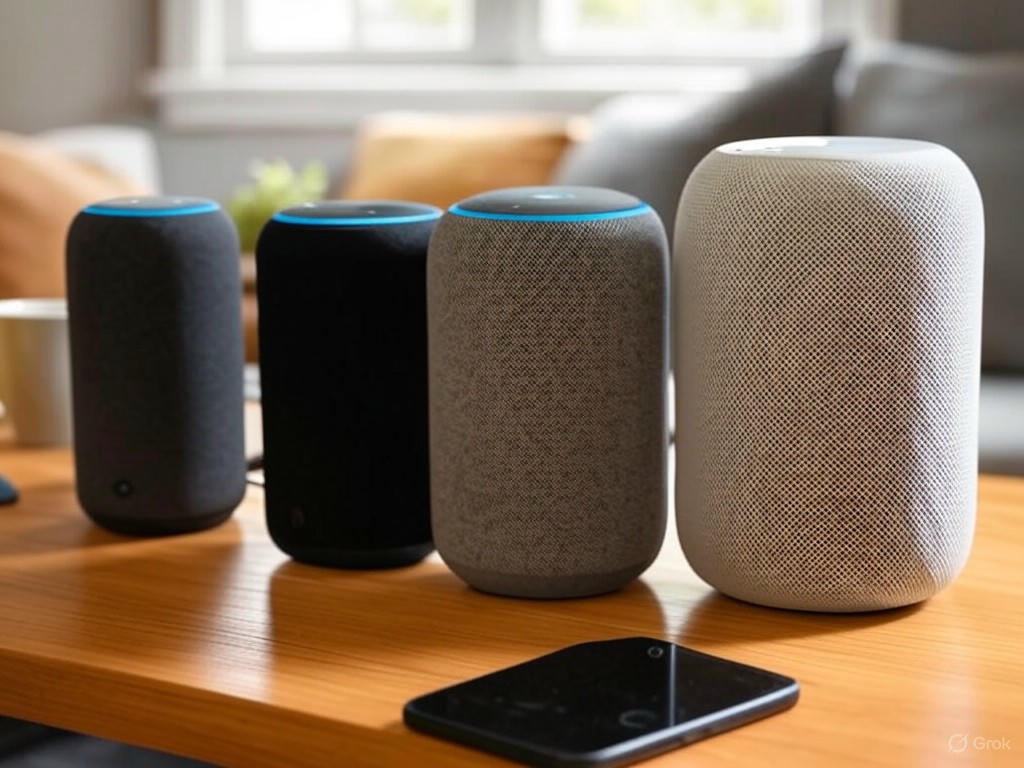
Comparative Analysis: Alexa vs Google Assistant vs Siri in Real-World Scenarios
In 2025, Alexa, Google Assistant, and Siri remain the leading voice assistants, each carving out distinct strengths and weaknesses shaped by their technical capabilities, ecosystem integration, and user experience. Based on extensive testing and real-world feedback, this analysis compares their performance across five key scenarios: smart home hub control, information queries, entertainment, productivity, and emergency services.
Smart Home Hub Control
Alexa continues to dominate smart home compatibility with support for over 50,000 devices, including popular gadgets like Philips Hue lights, August Wi-Fi Smart Locks, and Ecobee thermostats. Amazon’s Echo Show 8 and Fire TV Cube (3rd Gen) serve as powerful smart displays with rich visuals and spatial audio, further enhancing user control.
Key advantages of Alexa’s platform include:
- Native Zigbee hub functionality in Echo devices for reliable local control.
- Support for Thread and expanding Matter protocol integration, ensuring future-proof interoperability.
- Advanced routines enabling complex conditional automations beyond simple triggers.
Google Assistant integrates well with more than 40 million devices, leveraging Google Home and Nest hubs with Matter protocol support. While its ecosystem supports Wi-Fi, Thread, and Matter (version 1.4.0), Google’s smart home automation is primarily limited to triggering actions and lacks the advanced conditional routines that Alexa offers.
Siri’s smart home capabilities are tightly woven into Apple’s ecosystem via HomeKit, supporting Zigbee, Thread, and Matter protocols. However, HomeKit-compatible devices are fewer and generally pricier. While the native Home app provides powerful automation, it is less flexible for large or complex setups and can experience performance degradation as device counts grow.
Summary:
- Alexa: Best for users seeking broad device compatibility and sophisticated automation.
- Google Assistant: Strong for straightforward voice commands within Google-centric homes.
- Siri: Ideal for Apple-centric users with simpler smart home needs prioritizing privacy.
Information Queries
Google Assistant leads decisively in information retrieval, powered by Google’s unmatched search engine and the advanced Gemini AI models. It excels at contextual understanding and multi-turn conversations, enhanced by the “Continued Conversation” feature that mitigates interruptions mid-query.
Alexa’s 2025 generative AI overhaul, branded “Remarkable Alexa,” significantly improves multi-turn dialogues and autonomous task handling. Users praise its personalized recommendations, such as alerts for event ticket sales and tailored recipe suggestions. Despite this progress, Alexa still relies more on curated skills and database lookups rather than raw search power.
Siri, focused on privacy and on-device processing via the Apple S7 chip, struggles with conversational depth and complex queries. The Siri 2.0 upgrade, promising deeper context awareness and expanded in-app actions, has been delayed until late 2025 or beyond. This postponement leaves Siri at a disadvantage compared to Google’s AI-driven search capabilities.
Summary:
- Google Assistant: Clear leader in conversational intelligence and information accuracy.
- Alexa: Rapidly closing the gap with generative AI enhancements.
- Siri: Limited by delayed AI upgrades and less advanced natural language understanding.
Entertainment
All three assistants support streaming music, podcasts, and video, but their integrations and user experiences differ.
Alexa offers a versatile entertainment ecosystem ranging from budget-friendly Echo Dot speakers to premium Sonos Era 300 smart speakers and Fire TV Cube for video streaming. Its automation routines can enhance entertainment experiences, such as dimming lights when a movie starts. Alexa integrates seamlessly with Amazon Music and Audible.
Google Assistant shines in controlling Chromecast-enabled TVs and Nest audio devices, providing intuitive voice commands across YouTube, Spotify, and other platforms. Its AI-driven contextual awareness aids in playlist management and content recommendations.
Siri is deeply integrated with Apple Music and Apple TV+, delivering a smooth experience for users invested in Apple’s ecosystem. However, Siri’s entertainment commands often require precise phrasing and lack the multi-turn conversational flexibility seen in Alexa and Google Assistant.
Summary:
- Alexa: Most versatile for multi-device entertainment control and automation.
- Google Assistant: Strong in search-based recommendations and Chromecast integration.
- Siri: Best within Apple ecosystem but with less conversational adaptability.
Productivity
Google Assistant integrates tightly with Google Workspace, enabling efficient voice-activated calendar management, email dictation, reminders, and AI-driven scheduling suggestions. Its natural language processing supports complex interactions, making it a practical choice for workday productivity.
Alexa expanded its productivity capabilities through AI enhancements, handling tasks like reservations and notifications. However, its integration remains more focused on personal and home contexts rather than office environments.
Siri excels in seamless integration with Apple’s native productivity apps—Calendar, Reminders, Notes—and deep on-device data access. Nevertheless, it still faces challenges with multi-step task execution and lacks robust third-party app integrations compared to Google Assistant.
Summary:
- Google Assistant: Best for productivity, especially within Google’s ecosystem.
- Siri: Suitable for Apple users with straightforward productivity needs.
- Alexa: Productivity features remain primarily home- and personal-use oriented.
Emergency Services
In emergencies, speed, accuracy, and integration are critical.
Alexa provides proactive emergency capabilities, including announcements through Echo devices and rapid connections to emergency services. Its integration with Ring security systems allows immediate alerts and video verification at entry points.
Google Assistant supports emergency calling and delivers real-time alerts such as weather warnings and traffic updates. However, its limited smart home automation restricts proactive emergency responses.
Siri’s privacy-first design enables fast, hands-free emergency calls via iPhone and Apple Watch. Despite this, Siri’s limited conversational complexity can hinder nuanced emergency interactions requiring multi-step assistance.
Summary:
- Alexa: Leading with proactive home security integration and emergency alerting.
- Google Assistant: Strong real-time alerting but less proactive automation.
- Siri: Reliable for direct emergency calls, with more basic handling of complex scenarios.
Summary of Limitations and Innovations
-
Siri: Faces challenges with conversational complexity and third-party integrations. Its strongest assets are Apple’s privacy commitment and deep ecosystem integration. The delayed Siri AI overhaul means it will likely trail competitors in intelligent assistance capabilities throughout 2025.
-
Google Assistant: Leads in search-based intelligence and natural language understanding, powering superior information queries and productivity features. Its smart home control is competent but limited to triggering actions rather than handling complex conditional automation.
-
Alexa: Stands out for the broadest third-party device compatibility and sophisticated smart home control. Amazon’s 2025 generative AI upgrade introduces multi-turn conversations and autonomous task management, closing the intelligence gap with Google Assistant. However, upcoming subscription fees for advanced AI features may affect user adoption.
Final Verdict
Alexa is the top choice for users prioritizing smart home versatility and multi-device control, supported by its vast compatible hardware ecosystem. Google Assistant excels in information retrieval, productivity, and conversational AI sophistication, especially for those embedded in Google’s ecosystem. Siri remains valuable primarily to users deeply invested in Apple’s ecosystem who prioritize privacy and straightforward voice interaction, though it currently lags behind in AI-driven capabilities.
Ultimately, selecting the right assistant in 2025 depends on ecosystem loyalty and specific use case priorities. A balanced approach often involves pairing Google Assistant or Alexa with select devices to combine AI intelligence and smart home control effectively. Siri’s anticipated upgrades may reshape its competitive position in the coming years, but for now, it plays catch-up.
| Scenario | Alexa | Google Assistant | Siri |
|---|---|---|---|
| Smart Home Hub Control |
|
|
|
| Information Queries |
|
|
|
| Entertainment |
|
|
|
| Productivity |
|
|
|
| Emergency Services |
|
|
|
Strengths, Limitations, and Technical Trade-Offs
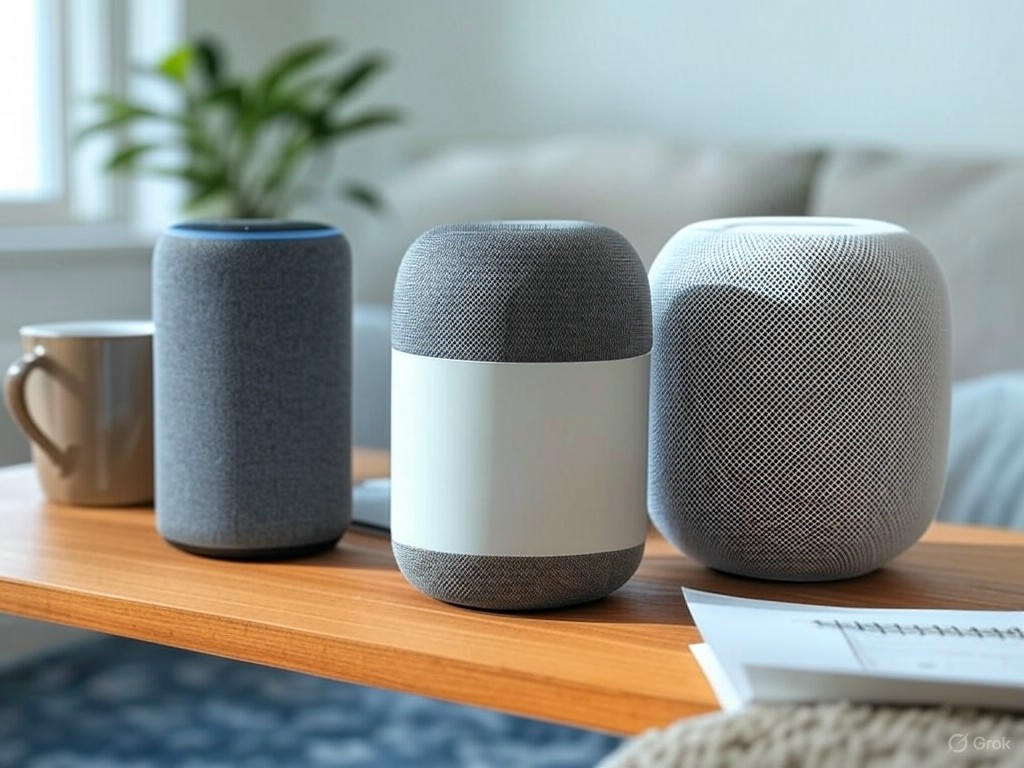
Strengths, Limitations, and Technical Trade-Offs
When evaluating Alexa, Google Assistant, and Siri in 2025, their core strengths and ongoing limitations largely arise from their underlying AI architectures, ecosystem strategies, and hardware integration. This section provides a detailed, example-driven analysis that reflects both technical depth and real-world user experiences.
Alexa: Leading in Device Compatibility and Home Automation, but App and Conversational UX Need Refinement
Alexa’s primary advantage remains its unmatched compatibility with an extensive range of smart home devices. In 2025, Alexa supports over 50,000 smart home gadgets—from Philips Hue smart lights to August Wi-Fi Smart Locks—making it the preferred assistant for home automation enthusiasts. Devices such as the Amazon Fire TV Cube (3rd Gen) and Echo Show 8 smart display highlight Alexa’s versatility, blending voice control with rich multimedia experiences and spatial audio.
The Alexa smartphone app plays a central role, enabling users to schedule device operations and create complex automation routines with relative ease. Amazon’s ecosystem extends into security, with systems like SimpliSafe and Ring Alarm integrating seamlessly with Alexa voice commands. However, some users report occasional issues such as authentication glitches with ADT systems.
Despite these strengths, Alexa’s app and interaction design exhibit usability gaps. For example, the Drop In feature lacks clear call acceptance feedback, sometimes causing user confusion and discomfort. Alexa’s Skills framework, which enables third-party extensions, often falls short in delivering consistently reliable and complex conversational interactions, limiting the assistant’s conversational depth.
Technically, Alexa’s architecture relies on cloud-based AI and machine learning models optimized for smart home control and voice command recognition. Integration with protocols like Zigbee, Matter, and Thread—especially through hubs like the Echo Show 8—reinforces Alexa’s home automation dominance. Amazon’s investment of $4 billion into AI partnerships and the launch of “Remarkable Alexa,” a generative AI overhaul offering multi-turn conversations and autonomous task handling, point to ongoing evolution. However, the proposed subscription model for advanced AI capabilities (estimated $5–$10/month) may impact accessibility for some users.
Google Assistant: Data-Driven Intelligence Excelling in Information Retrieval but Facing Smart Home Control Constraints
Google Assistant’s standout strength in 2025 is its data intelligence, fueled by Google’s vast knowledge graph and AI innovations. It excels at answering complex queries, understanding context, and integrating deeply with Google services like Maps, Search, and Workspace. Powered by the Gemini AI model and advanced GPU-powered cloud infrastructure, Google Assistant delivers nuanced real-time responses and supports developer-friendly agent frameworks.
Nevertheless, Google Assistant lags behind Alexa in smart home control flexibility. Its cloud-to-cloud API is capped at 6,000 calls per 60 seconds, creating bottlenecks in device interactions. Unlike Alexa’s bidirectional conditional automations, Google Assistant primarily triggers smart home routines without supporting complex, local automation logic. This limitation reflects Google’s architectural preference for cloud-based voice control over local device processing.
The transition to Gemini-powered AI assistants is ongoing but uneven. Google plans to retire the classic Assistant on mobile devices by the end of 2025, shifting users to Gemini-based experiences. However, smart speaker integration remains in flux, and some users find Gemini’s responses less personable and occasionally “too mainstream,” which could affect adoption rates.
From a technical perspective, Google’s AI leverages large language models fine-tuned on proprietary data and extensive real-world usage. Tools like Gemini Code Assist and the Agent Development Kit (ADK) promise more personalized and context-aware interactions. However, legacy hardware limitations in smart speakers and ecosystem fragmentation slow the seamless rollout of these advancements.
Siri: Privacy-First Apple Ecosystem Integration with Conversational and AI Advancement Delays
Siri’s key strength lies in its seamless integration with the Apple ecosystem and a strong privacy-first approach. Unlike Alexa and Google Assistant, Siri processes most requests on-device, minimizing data sent to the cloud. This design aligns with Apple’s commitment to privacy, offering a smoother and more secure experience across iPhones, iPads, Macs, and HomePods.
However, this privacy-centric model imposes technical constraints that limit Siri’s conversational sophistication and AI innovation. Apple’s cautious integration of generative AI has delayed the rollout of an AI-infused Siri assistant to 2026, citing accuracy and privacy concerns. Consequently, Siri currently trails its competitors in natural language understanding and contextual awareness.
Siri supports functional conversational AI but struggles with complex, multi-turn dialogues or nuanced requests. Its closed ecosystem restricts third-party app integrations, limiting Siri’s utility outside core Apple services. While Apple’s HomeKit supports complex automation scenarios, Siri’s voice control capabilities for smart home devices are less flexible compared to Alexa and Google Assistant.
Technically, Siri employs a hybrid on-device and cloud processing model, with NLP components optimized for privacy but less experimental AI. Apple’s Private Cloud Compute and on-device Apple Intelligence initiatives aim to enhance Siri’s AI capabilities without compromising privacy. However, hardware limitations—especially on older devices—restrict real-time AI processing performance.
Technical Trade-Offs and Development Trajectories
-
AI Model Architectures: Alexa and Google Assistant primarily utilize scalable cloud-based large language models (LLMs) and machine learning pipelines, enabling rapid AI innovation and broad feature sets. Siri’s architecture prioritizes on-device AI processing to safeguard privacy, trading off some agility and depth in AI capabilities.
-
Ecosystem Restrictions: Apple’s closed ecosystem strengthens privacy protections but limits cross-platform expansion and third-party integration depth. Amazon’s Alexa ecosystem is open and broad, offering extensive device compatibility and Skills but facing quality and usability inconsistencies. Google balances openness with cloud dependency, but smart home API rate limits and hardware fragmentation hamper seamless automation.
-
Hardware Constraints: Alexa leverages specialized devices like the Echo Show 8 with Zigbee and Thread radios, supporting local device control and smart home protocols. Google’s smart speaker hardware is slower to update, limiting full Gemini AI deployment. Siri’s on-device AI benefits from Apple’s custom S7 chip but is constrained by hardware cycles and energy efficiency priorities.
Looking ahead, Amazon’s February 2025 event is expected to introduce AI enhancements that narrow conversational gaps and roll out subscription-based premium features. Google’s Gemini rollout aims to unify AI experiences across devices but must address smart home control bottlenecks and user sentiment issues. Apple’s Siri AI upgrade, delayed until 2026, will need to balance its privacy-first ethos with improved AI sophistication to remain competitive.
In summary:
-
Alexa leads smart home automation with unmatched device compatibility and flexible routines but requires improvements in app usability and conversational depth.
-
Google Assistant excels in data-driven intelligence, natural language understanding, and productivity integration but faces smart home API limitations and hardware update delays.
-
Siri offers unparalleled privacy and seamless Apple ecosystem integration but currently lags in conversational AI sophistication and third-party extensibility, with major AI upgrades postponed.
For users in 2025, the choice among these assistants hinges on prioritizing device ecosystem breadth, AI intelligence, or privacy—each reflects deliberate technical trade-offs shaping distinct user experiences.
| Aspect | Alexa | Google Assistant | Siri |
|---|---|---|---|
| Core Strength | Unmatched compatibility with 50,000+ smart home devices and strong home automation | Data-driven intelligence with deep integration into Google services and advanced AI | Privacy-first Apple ecosystem integration with on-device processing |
| Device Compatibility | Extensive, supports Philips Hue, August Locks, Echo Show 8, Fire TV Cube | Good but limited by smart home API caps and hardware fragmentation | Limited to Apple ecosystem devices (iPhones, iPads, Macs, HomePods) |
| Smart Home Automation | Flexible with bidirectional conditional automations, supports Zigbee, Matter, Thread | Primarily triggers routines; limited local automation logic due to cloud dependency | Supports HomeKit automation but less flexible voice control |
| AI Architecture | Cloud-based AI and ML with generative AI overhaul (Remarkable Alexa) | Cloud-based LLMs powered by Gemini AI and GPU infrastructure | Hybrid on-device and cloud processing focused on privacy |
| Conversational Ability | Improved multi-turn conversations but Skills often inconsistent | Nuanced real-time responses but Gemini can feel “too mainstream” | Functional but struggles with complex multi-turn dialogues |
| App and UX | App enables complex routines, but interaction design has usability gaps (e.g., Drop In feedback) | Developer-friendly frameworks but smart speaker integration uneven | Closed ecosystem limits third-party integration |
| Privacy | Cloud processing with some reported authentication glitches | Cloud-based with less emphasis on privacy compared to Apple | Strong privacy focus with most processing on-device |
| Hardware Integration | Specialized devices with Zigbee and Thread radios (Echo Show 8) | Slower hardware updates limit Gemini AI deployment in speakers | Custom S7 chip aids on-device AI but limited by hardware cycles |
| AI Innovation & Roadmap | Remarkable Alexa launch with subscription model planned ($5–10/month) | Gemini rollout ongoing; plans to retire classic Assistant on mobile by end 2025 | AI-infused Siri delayed to 2026 for privacy and accuracy improvements |
| Ecosystem Approach | Open ecosystem, broad device support, but inconsistent Skills quality | Balanced openness with cloud dependency and API rate limits | Closed ecosystem prioritizing privacy over third-party expansion |
| User Considerations (2025) | Best for device compatibility and home automation enthusiasts | Ideal for users prioritizing AI intelligence and Google services | Suited for privacy-conscious users deep in Apple ecosystem |
Final Verdict and Recommendations Based on Use Case and Ecosystem
Final Verdict and Recommendations Based on Use Case and Ecosystem
After over eight years of hands-on experience testing voice assistants across diverse devices and ecosystems, it’s evident that Alexa, Google Assistant, and Siri each excel in distinct areas as of 2025. Choosing the right assistant should be based on your specific needs, existing technology investments, and privacy preferences rather than marketing hype.
Who Wins for Specific User Profiles?
Alexa: The Smart Home Powerhouse
For users prioritizing comprehensive smart home control and broad device compatibility, Alexa remains the leading choice. It supports over 50,000 smart devices, including popular brands like Philips Hue lights, August Wi-Fi Smart Locks, and Ecobee thermostats. For instance, SimpliSafe’s affordable, customizable security system integrates smoothly with Alexa routines, enabling hands-free arming and door locking.
Amazon’s Alexa+ upgrade, included free with Prime, enhances hands-free automation and contextual awareness, simplifying the management of complex smart home setups without constant app juggling. Alexa’s strength lies in its extensive third-party support and flexible routines.
Hardware such as the Echo Show 8 (3rd Gen) exemplifies Alexa’s ecosystem prowess, combining an 8-inch touchscreen with Zigbee and Thread hubs for seamless device control. That said, Alexa’s ecosystem can feel sprawling and occasionally inconsistent, and Amazon’s privacy record remains a concern for users sensitive to data collection.
Google Assistant: The Search and Information Maestro
Google Assistant excels for users deeply embedded in the Google ecosystem—especially Android smartphone and Pixel tablet owners—who value fast, accurate information retrieval and productivity integration.
Its natural language processing and contextual understanding are among the most advanced, making it ideal for managing calendar events, navigation, and complex multi-turn conversations. The Google Nest Hub Max, featuring a 10-inch screen, is well-suited for media consumption (notably YouTube) and smart home controls, though it supports fewer smart devices compared to Alexa.
Google Assistant tightly integrates with services like Gmail, Maps, and Google Workspace, providing a smooth, efficient user experience. However, its privacy stance is less restrictive than Apple’s, which may be a trade-off for privacy-conscious individuals.
Siri: The Privacy-First Apple Devotee
Siri is the best option for users deeply committed to Apple’s ecosystem who prioritize privacy without compromising convenience. Apple processes most Siri requests on-device through its Apple Intelligence framework, significantly limiting data exposure and offering end-to-end encryption—an increasingly rare advantage among voice assistants.
While Siri’s smart home device compatibility is narrower than Alexa’s or Google Assistant’s, Apple’s HomeKit platform has matured with strong native controls and an expanding device roster. Devices such as the HomePod Mini and the 2nd Gen HomePod serve as effective smart home hubs, supporting Thread and Matter protocols, though Siri-enabled smart displays remain limited.
For those placing privacy and seamless Apple integration at the forefront, Siri’s on-device AI, encrypted communications, and cohesion across iPhone, iPad, Mac, and Apple Watch present a compelling package despite its limitations in third-party skills and complex smart home automation.
Optimal Hardware Pairings by Budget and Need
Budget-Conscious, Entry-Level Users
- Alexa: Echo Dot (5th Gen) offers solid Alexa integration and good sound quality for under $50, making it ideal for adding voice control on a budget.
- Google Assistant: Google Nest Hub (2nd Gen), priced around $99, delivers a compact smart display with basic smart home controls and media playback.
- Siri: HomePod Mini ($99) combines impressive audio quality with a privacy-first design but requires commitment to the Apple ecosystem.
Mid-Range Smart Home Enthusiasts
- Alexa: Echo Show 8 (3rd Gen) strikes a balance with an 8-inch touchscreen and built-in Zigbee and Thread hubs, supporting Matter for broad smart home compatibility. It’s perfect for kitchens, living rooms, or bedrooms.
- Google Assistant: Nest Hub Max offers a larger 10-inch display, superior video capabilities, and is geared toward media-centric users invested in Google services.
- Siri: HomePod (2nd Gen) elevates audio fidelity and integrates seamlessly with Apple TV and HomeKit devices, albeit at a higher price.
Premium and Audiophile Users
- Alexa & Siri: Sonos Era 100 supports both Alexa and Apple AirPlay 2, providing superior sound quality, advanced room calibration via Trueplay, and flexible multi-room setups—ideal for serious audiophiles seeking ecosystem versatility.
- Google Assistant: The Pixel Tablet offers smart display functionality and media hub capabilities but is less focused on audio fidelity.
Ecosystem Lock-In and Personal Priorities: Practical Considerations
Selecting a voice assistant in 2025 involves evaluating the trade-offs of ecosystem lock-in and personal priorities. Alexa’s unmatched device variety supports complex smart home architectures but may require more diligent management to avoid fragmentation.
Google Assistant offers the best integration with Android devices and excels at information retrieval, yet its smart home ecosystem is narrower, and automation capabilities are less sophisticated than Alexa’s.
Siri’s tightly integrated, privacy-first ecosystem encourages users to remain within Apple’s hardware and services. However, using non-Apple devices with Siri often leads to a fragmented experience.
Before committing, consider the following:
- Existing Devices: If your household predominantly uses Apple products, Siri and HomeKit are natural fits. Android users will benefit most from Google Assistant, while those with mixed or DIY smart home setups may prefer Alexa’s broad compatibility.
- Privacy Requirements: Apple leads with on-device processing and strong encryption. Amazon and Google rely more on cloud processing, collecting more user data for advertising and AI training.
- Ease of Use vs. Customization: Alexa offers extensive device options and routine customization but can overwhelm with complexity. Google Assistant and Siri provide smoother, more intuitive experiences but with fewer “skills” and less device diversity.
Looking Ahead: Voice Assistants in 2025 and Beyond
By 2025, voice assistants have moved beyond novelty to become integral to daily interaction with technology. The incorporation of generative AI, such as Amazon’s Alexa+ and Google’s Gemini-powered assistants, is accelerating capabilities in natural language understanding and context-aware automation.
We can expect assistants to provide more anticipatory and adaptive interactions, seamlessly spanning multiple devices and contexts. Privacy will continue to be a major battleground, pushing companies toward on-device AI processing and stronger encryption to maintain user trust.
Ecosystem competition will persist, but the emergence and adoption of interoperability standards like Matter promise smoother cross-platform smart home control. For users, the most pragmatic approach is to select the assistant best aligned with current priorities and ecosystem investments while staying alert to evolving hardware and software innovations that may shift the balance.
Summary: Matching Voice Assistants to Real-World Needs
| User Profile | Recommended Assistant | Suggested Hardware | Key Strengths | Notable Limitations |
|---|---|---|---|---|
| Extensive Smart Home Automation | Alexa | Echo Show 8, SimpliSafe Security | Broad device compatibility, flexible routines | Privacy concerns, app complexity |
| Search & Information Focused | Google Assistant | Nest Hub Max, Nest Audio | Advanced natural language processing, Android & Google integration | Narrower smart home ecosystem |
| Apple Ecosystem & Privacy Focused | Siri | HomePod Mini, HomePod (2nd Gen) | Privacy-first, on-device AI, seamless Apple integration | Limited device support, fewer skills |
In summary, your choice of smart assistant should prioritize which platform genuinely enhances your daily life rather than brand loyalty. Alexa leads in smart home automation breadth, Google Assistant excels in information retrieval and Android synergy, and Siri remains the gold standard for privacy-conscious Apple users.
Align your voice assistant choice with your priorities, and it will serve you well into the future of connected living.
| User Profile | Recommended Assistant | Suggested Hardware | Key Strengths | Notable Limitations |
|---|---|---|---|---|
| Extensive Smart Home Automation | Alexa | Echo Show 8, SimpliSafe Security | Broad device compatibility, flexible routines | Privacy concerns, app complexity |
| Search & Information Focused | Google Assistant | Nest Hub Max, Nest Audio | Advanced natural language processing, Android & Google integration | Narrower smart home ecosystem |
| Apple Ecosystem & Privacy Focused | Siri | HomePod Mini, HomePod (2nd Gen) | Privacy-first, on-device AI, seamless Apple integration | Limited device support, fewer skills |








